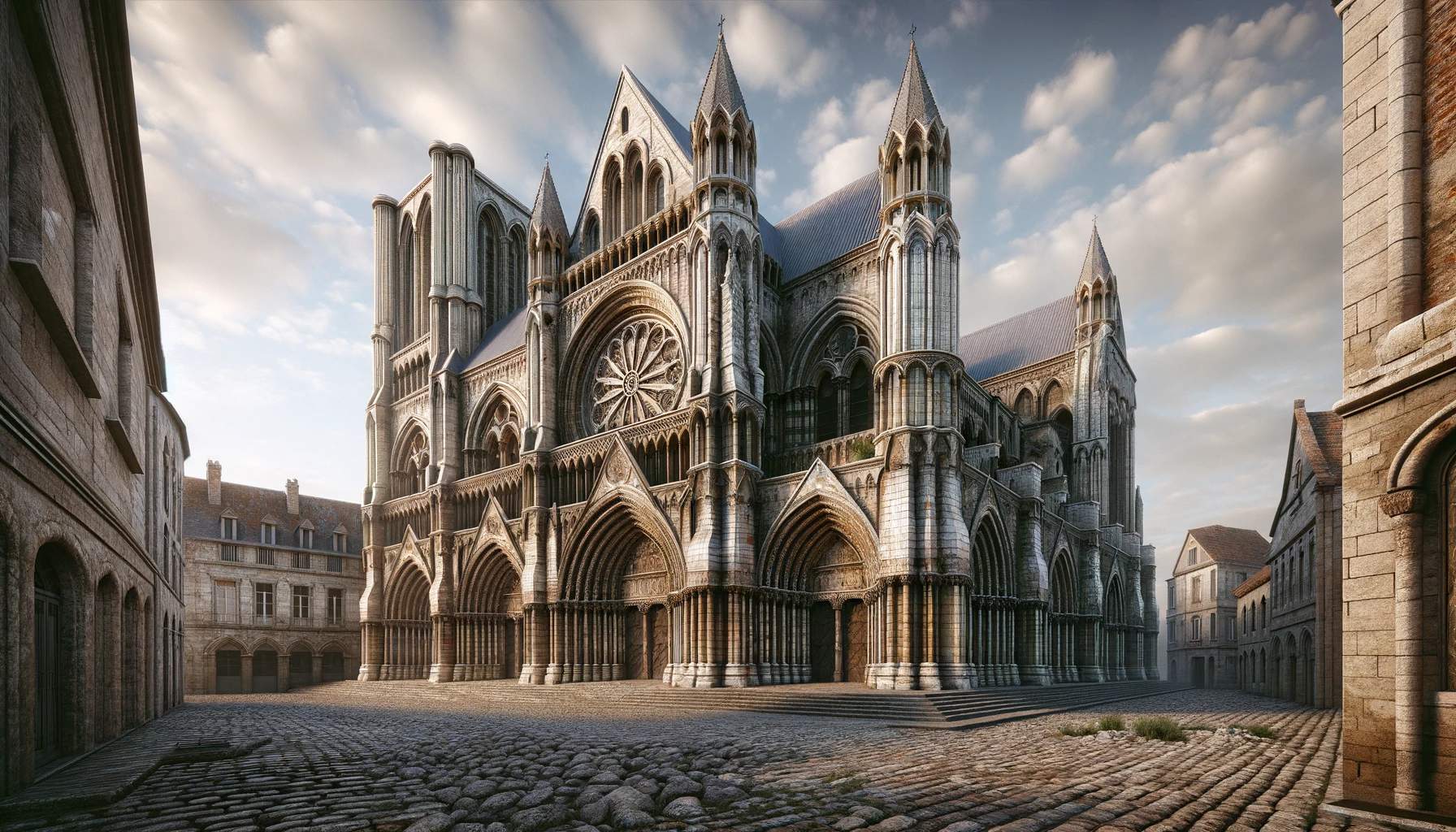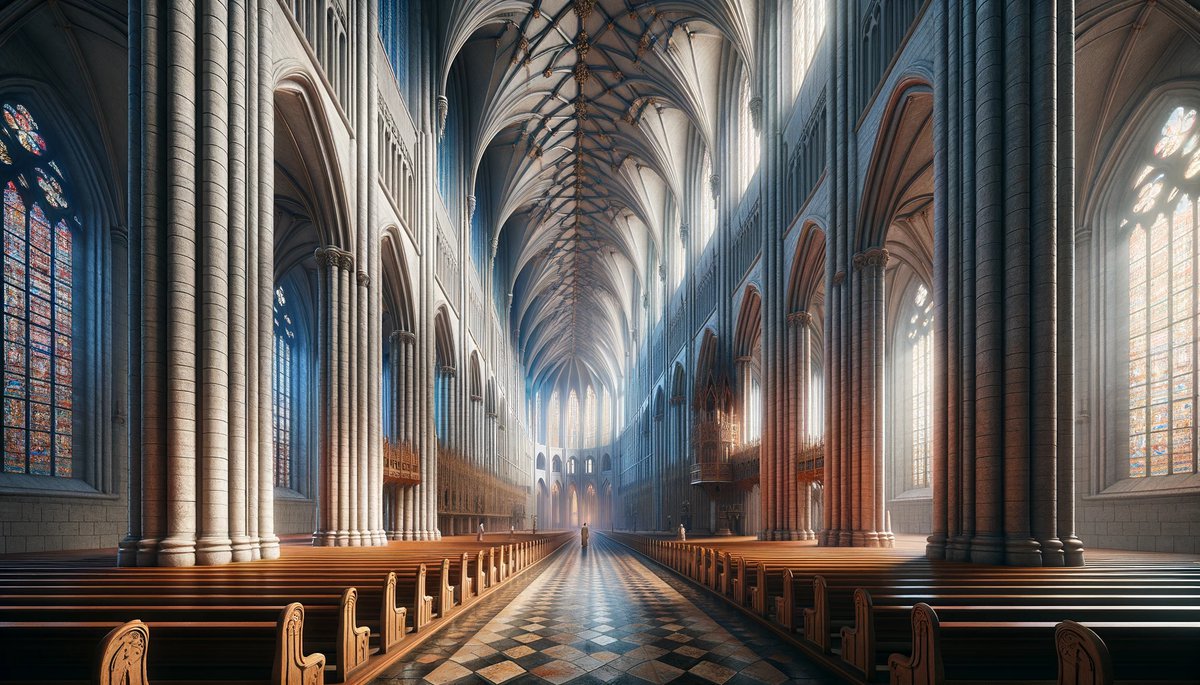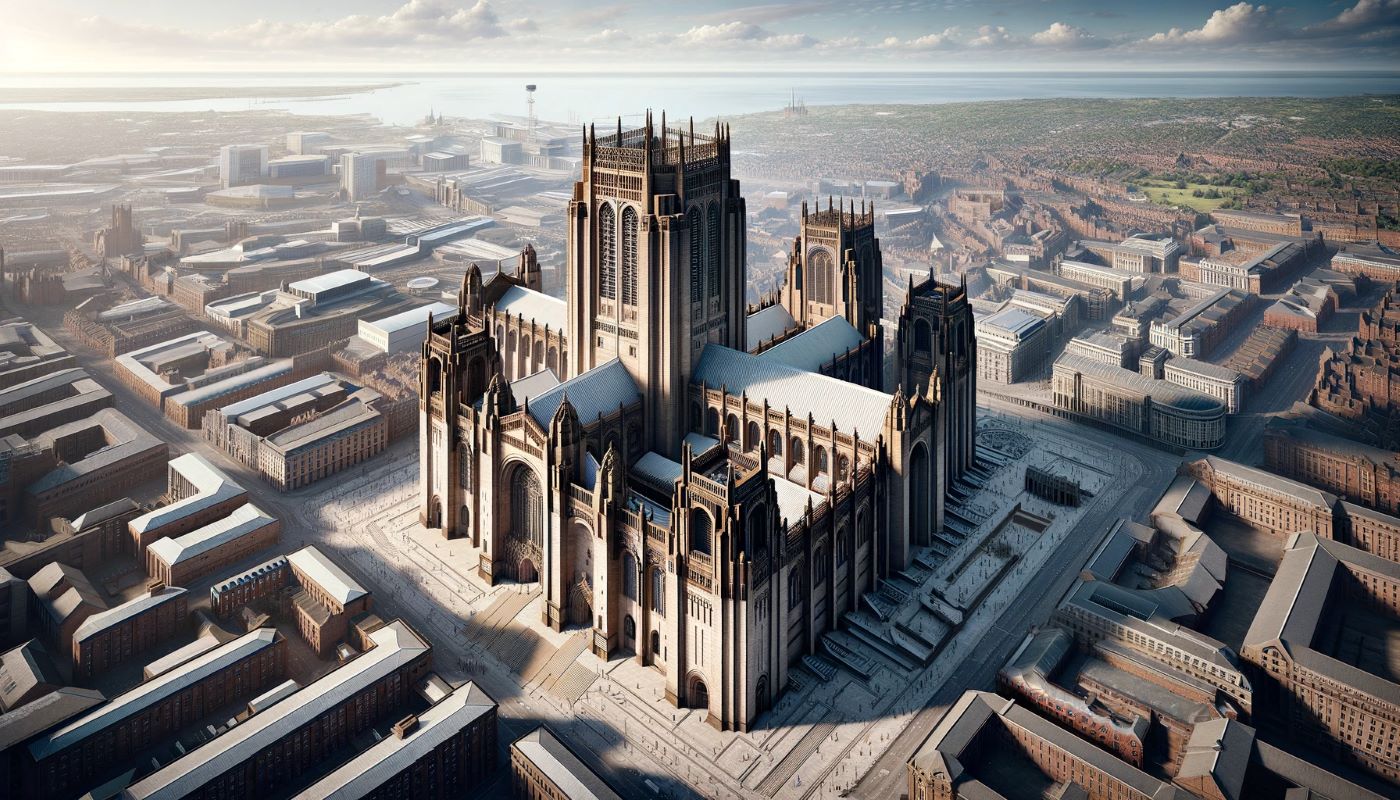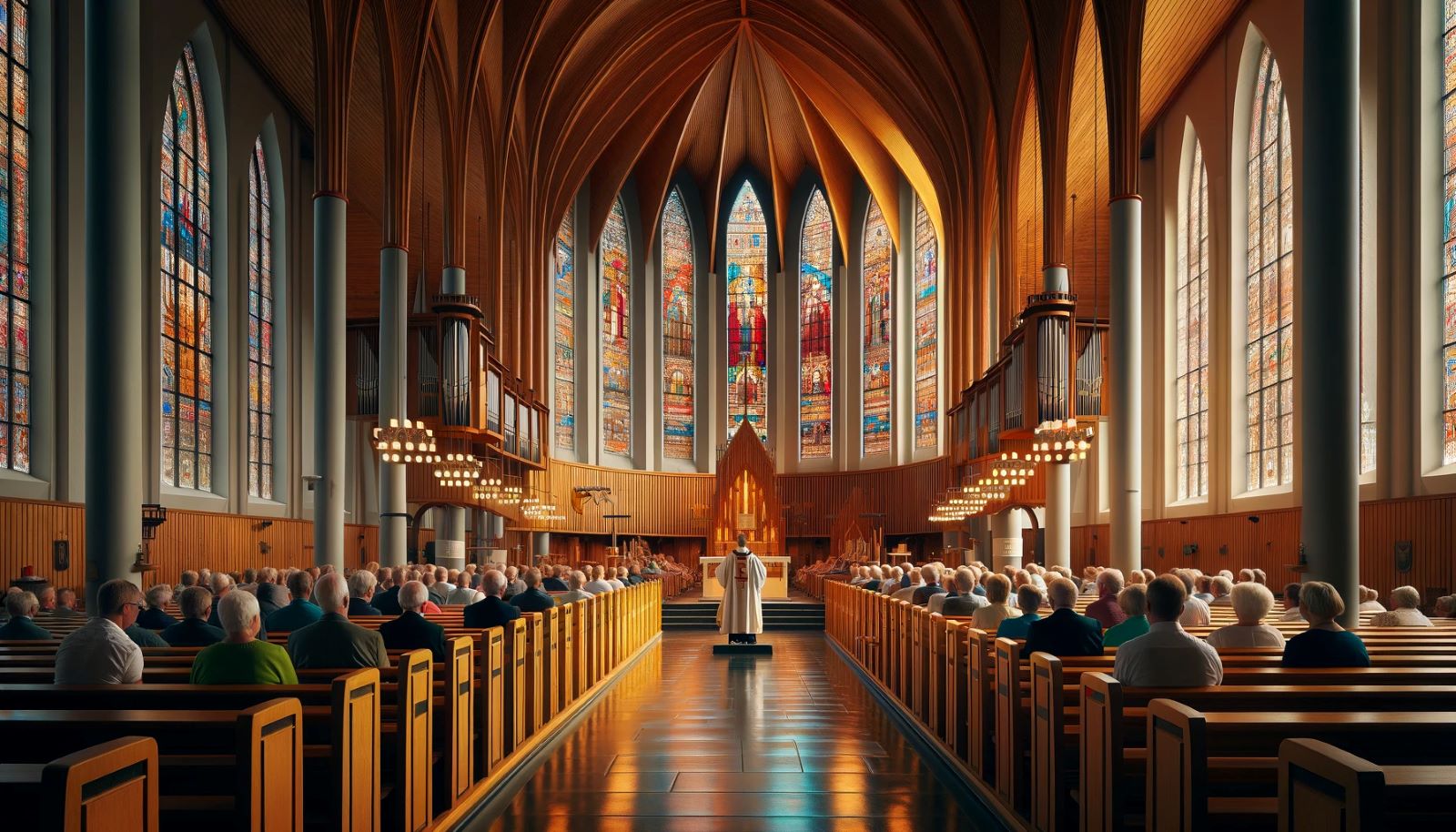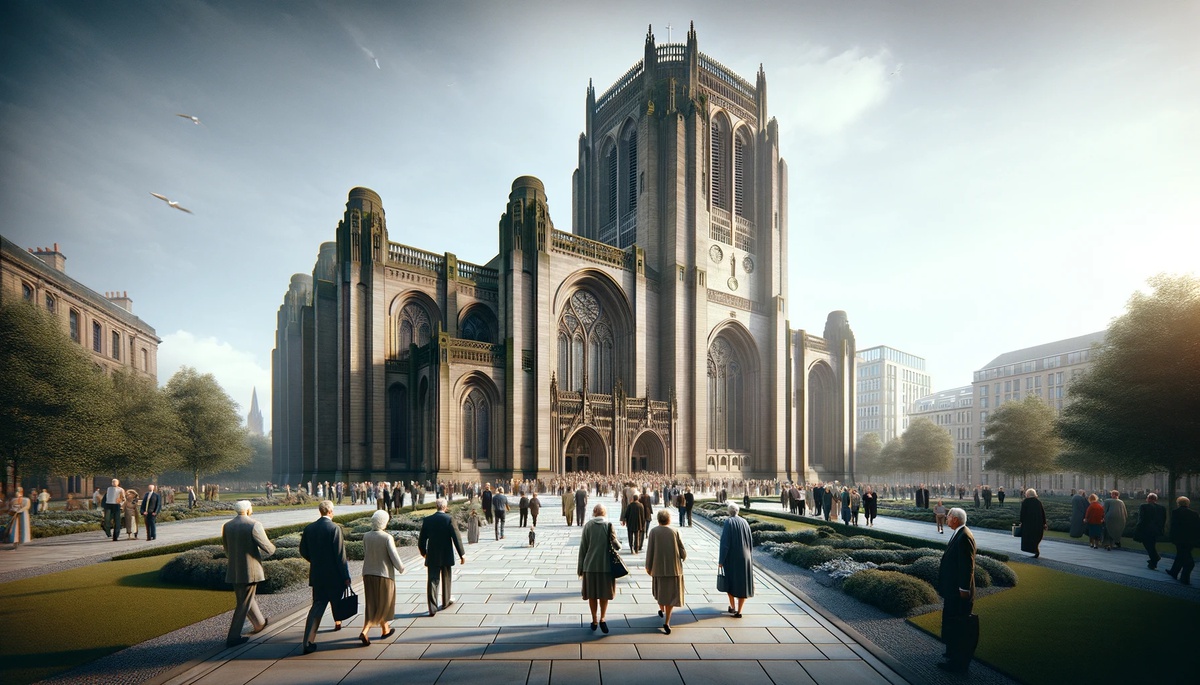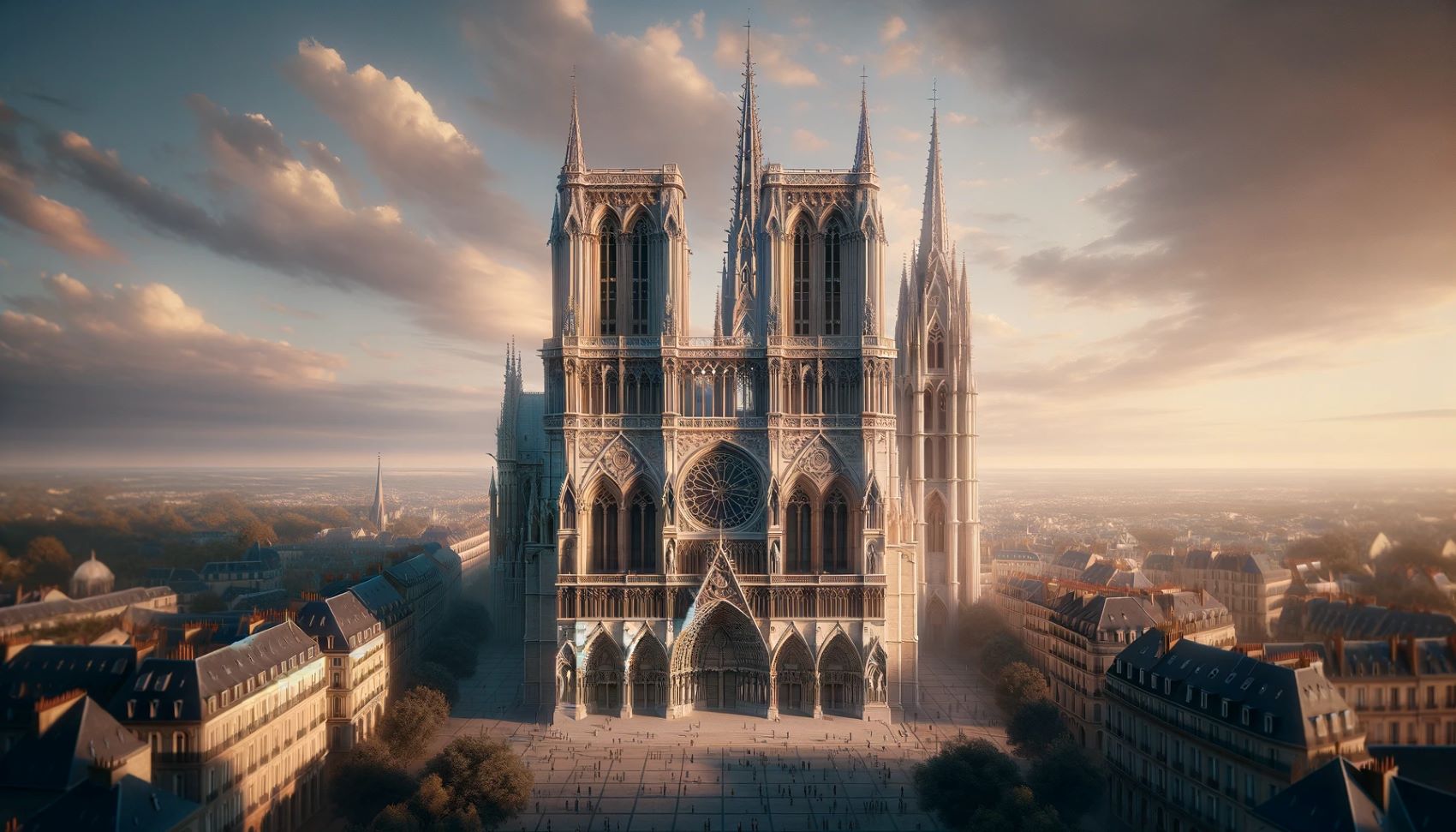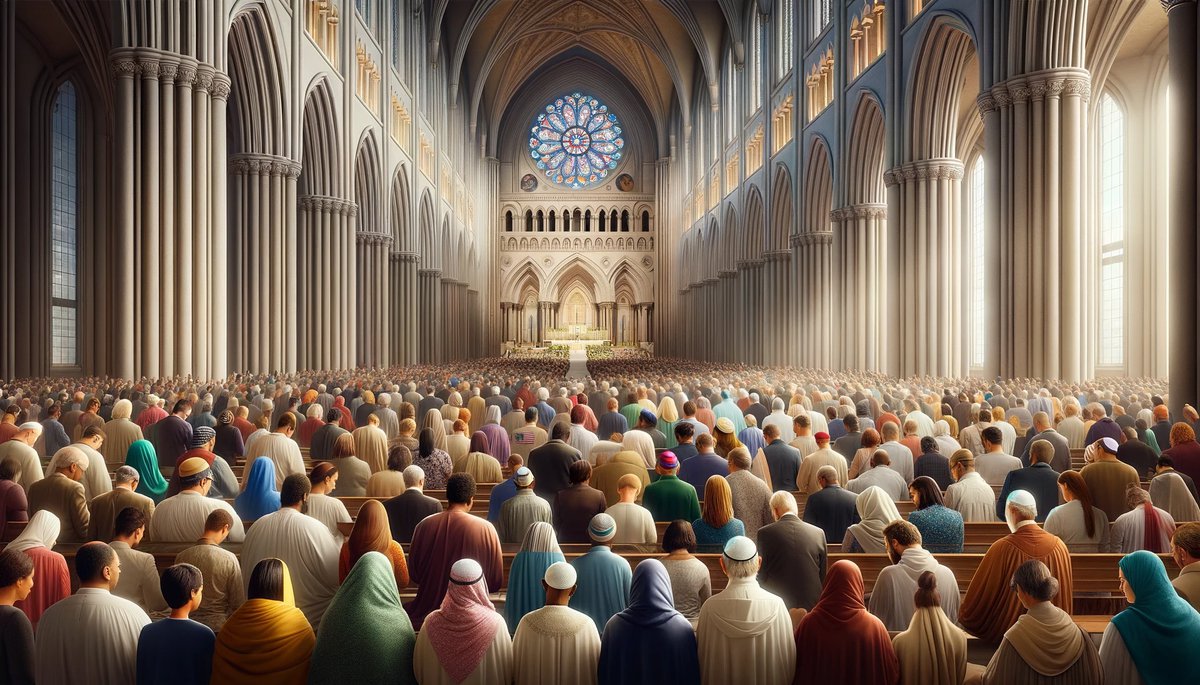Home>Arts and Culture>What Color Is Used The Most In The Mosaics Of The Monreale Cathedral


Arts and Culture
What Color Is Used The Most In The Mosaics Of The Monreale Cathedral
Published: February 15, 2024
Jason DeRose, Managing Editor at Christian.net, uses his expertise in religion and journalism to deepen understanding of faith's societal impacts. His editorial leadership, coupled with a strong academic background, enriches the platform’s diverse content, earning him recognition in both journalism and religious circles.
Discover the predominant color used in the stunning mosaics of the Monreale Cathedral. Explore the art and culture of this architectural masterpiece.
(Many of the links in this article redirect to a specific reviewed product. Your purchase of these products through affiliate links helps to generate commission for Christian.net, at no extra cost. Learn more)
Table of Contents
Introduction
The Monreale Cathedral, located in the picturesque town of Monreale, Sicily, is a masterpiece of Norman architecture and a testament to the rich cultural heritage of the region. One of the most striking features of this awe-inspiring structure is its magnificent mosaics, which adorn the walls, ceilings, and arches of the cathedral. These intricate mosaics, renowned for their exquisite beauty and historical significance, have captivated the imagination of art enthusiasts and historians for centuries.
The mosaics of the Monreale Cathedral represent a harmonious blend of Byzantine, Arab, and Norman artistic influences, reflecting the diverse cultural tapestry of Sicily during the medieval era. As visitors step into the cathedral, they are enveloped by a kaleidoscope of colors and patterns, each mosaic telling a unique story and contributing to the overall grandeur of the sacred space.
In this article, we will embark on a fascinating journey to explore the captivating world of the Monreale Cathedral's mosaics, delving into the history, techniques, symbolism, and the predominant use of color in these extraordinary works of art. By unraveling the mysteries and marvels of the mosaics, we aim to gain a deeper understanding of their cultural significance and the profound impact they have had on the artistic landscape of Sicily.
Join us as we embark on an enchanting exploration of the Monreale Cathedral's mosaics, where history, art, and spirituality converge to create an enduring legacy that continues to inspire and enthrall visitors from around the globe.
Read more: What Are The Most Popular Methodist Hymns
History of the Monreale Cathedral
The history of the Monreale Cathedral is deeply intertwined with the cultural and religious tapestry of Sicily. Commissioned by King William II of Sicily in 1174, the cathedral stands as a testament to the Norman influence in the region and the flourishing artistic patronage during the medieval era. The construction of the cathedral was a grand undertaking, reflecting the ambitious vision of King William II to create a monumental edifice that would symbolize the power and prestige of the Norman kingdom.
Designed by a team of skilled architects and artisans, the cathedral was built on the site of an earlier church, with the intention of surpassing its predecessors in both scale and splendor. The architectural style of the cathedral is a fusion of Romanesque, Byzantine, and Arab-Norman influences, showcasing the diverse cultural heritage of Sicily. The construction of the cathedral was completed in a remarkably short span of time, with the consecration taking place in 1182, a testament to the unwavering dedication and expertise of the craftsmen involved in the project.
The Monreale Cathedral served not only as a place of worship but also as a symbol of royal authority and religious devotion. Its strategic location overlooking the fertile valley of Conca d'Oro further emphasized its significance as a monumental landmark in the Sicilian landscape. The cathedral became a center of cultural and artistic exchange, attracting scholars, artists, and pilgrims from across the Mediterranean, who were drawn to its magnificent architecture and the treasures it housed.
The enduring legacy of the Monreale Cathedral is a testament to the enduring legacy of the Norman dynasty and the vibrant cultural milieu of medieval Sicily. Its historical significance as a UNESCO World Heritage Site underscores its importance as a living testament to the artistic, architectural, and religious heritage of the region. As we delve deeper into the intricate mosaics adorning the cathedral, it is essential to appreciate the historical context in which these masterpieces were created, reflecting the convergence of diverse cultural influences and the enduring legacy of the Monreale Cathedral in the annals of art and history.
Importance of Mosaics in the Monreale Cathedral
The mosaics adorning the Monreale Cathedral hold profound significance, serving as a visual chronicle of religious narratives, cultural exchange, and artistic innovation. These intricate works of art are not merely decorative embellishments but are integral to the spiritual and aesthetic experience of the cathedral. The importance of the mosaics in the Monreale Cathedral can be understood through several compelling facets:
1. Spiritual and Religious Significance
The mosaics in the Monreale Cathedral are imbued with profound religious symbolism, depicting scenes from the Old and New Testaments, the lives of saints, and the divine hierarchy of heaven. As worshippers enter the sacred space, they are enveloped by a visual narrative that transcends time, inviting contemplation and spiritual reflection. The mosaics serve as a medium through which the sacred stories of Christianity are brought to life, fostering a sense of awe and reverence among the faithful.
2. Cultural and Artistic Heritage
The mosaics of the Monreale Cathedral represent a harmonious fusion of artistic traditions, reflecting the multicultural ethos of medieval Sicily. Influences from Byzantine, Arab, and Norman artistic styles converge in these mosaics, showcasing the vibrant exchange of ideas and techniques that characterized the era. As such, the mosaics stand as a testament to the rich cultural tapestry of Sicily, preserving and celebrating the artistic heritage of diverse civilizations.
3. Architectural Integration
The mosaics are seamlessly integrated into the architectural design of the cathedral, enhancing its grandeur and magnificence. From the shimmering golden mosaics of the apse to the intricate depictions on the nave and transept walls, every mosaic panel is meticulously crafted to complement the architectural elements of the cathedral. The interplay of light and color creates a transcendent atmosphere, elevating the overall aesthetic impact of the sacred space.
4. Educational and Historical Value
Beyond their aesthetic allure, the mosaics serve as invaluable historical and educational resources, offering insights into the religious beliefs, artistic techniques, and cultural exchanges of the medieval period. Scholars and art enthusiasts alike are drawn to the Monreale Cathedral to study these mosaics, unraveling their intricate details and unraveling the stories they convey. Through the mosaics, visitors are transported back in time, gaining a deeper understanding of the historical context in which these masterpieces were created.
In essence, the mosaics of the Monreale Cathedral are not mere embellishments but are integral to the cathedral's identity, encapsulating the spiritual, cultural, and artistic essence of medieval Sicily. Their enduring allure continues to inspire wonder and admiration, ensuring that their importance transcends time, inviting generations to marvel at their timeless beauty and significance.
Analysis of Color Usage in the Mosaics
The color palette employed in the mosaics of the Monreale Cathedral is a testament to the artistry and technical prowess of the craftsmen who brought these masterpieces to life. Each hue and shade serves a purpose, contributing to the visual narrative and emotional resonance of the mosaics. The analysis of color usage in the mosaics reveals a deliberate and sophisticated approach to color selection, reflecting the aesthetic sensibilities and symbolic significance attributed to different hues.
1. Gold and Its Radiance
Gold, with its luminous and radiant quality, occupies a prominent position in the color scheme of the mosaics. The extensive use of gold tesserae imparts a celestial glow to the depictions, symbolizing divine light and transcendence. The shimmering gold backgrounds serve as a visual metaphor for the heavenly realm, elevating the sacred scenes and figures depicted within the mosaics. The strategic placement of gold tesserae captures and reflects light, creating an ethereal ambiance that captivates the beholder.
Read more: What Is The Cathedral In Madrid
2. Rich Jewel Tones
The mosaics feature a rich array of jewel tones, including deep blues, vibrant greens, and regal purples. These opulent hues convey a sense of opulence and majesty, befitting the religious and royal themes depicted in the artwork. The use of jewel tones not only adds visual splendor to the mosaics but also evokes a sense of grandeur and spiritual significance. The interplay of these rich colors creates a tapestry of visual enchantment, drawing the viewer into the intricate details of the scenes portrayed.
3. Earthy and Natural Tones
In contrast to the resplendent jewel tones, the mosaics also incorporate earthy and natural hues, such as warm ochres, soft browns, and verdant greens. These earthy tones ground the compositions, providing a sense of earthly presence amidst the celestial grandeur. The use of natural hues in depicting landscapes and architectural elements adds a sense of realism and harmony to the mosaics, bridging the divine and the earthly realms within the artistic tableau.
4. Symbolic Significance of Colors
Beyond their aesthetic appeal, the colors in the mosaics carry profound symbolic significance. Gold represents the divine and eternal, while blue conveys heavenly purity and transcendence. Green symbolizes renewal and hope, while red evokes passion and sacrifice. Each color is imbued with layers of meaning, enriching the visual storytelling and inviting contemplation on the deeper spiritual and allegorical dimensions of the mosaics.
In essence, the analysis of color usage in the mosaics of the Monreale Cathedral unveils a rich tapestry of hues, each carefully chosen to convey spiritual, emotional, and symbolic nuances. The interplay of gold, jewel tones, and natural hues creates a visual symphony that elevates the mosaics to a realm of timeless beauty and spiritual resonance.
Techniques and Materials Used in Creating the Mosaics
The creation of the mesmerizing mosaics adorning the Monreale Cathedral involved a meticulous and labor-intensive process, showcasing the exceptional craftsmanship and artistic ingenuity of the medieval artisans. The techniques and materials employed in crafting these enduring masterpieces offer a glimpse into the intricate art of mosaic-making, highlighting the dedication and expertise required to bring such monumental works to fruition.
Read more: What Is A Cathedral Church
1. Tesserae and Their Intricate Arrangement
The foundation of the mosaics lies in the tesserae, small pieces of glass, stone, and ceramic meticulously cut and arranged to form intricate patterns and images. The artisans, known as "mosaicists," skillfully selected and arranged tesserae of varying colors and sizes to achieve the desired visual effects. Each tessera was placed with precision, creating a seamless and harmonious composition that captivates the eye with its detail and artistry.
2. The Role of Smalti and Gold Tesserae
Smalti, a type of glass characterized by its rich, jewel-like colors, played a pivotal role in the creation of the mosaics. The vibrant hues of smalti tesserae added depth and opulence to the compositions, infusing the artwork with a sense of grandeur and splendor. Additionally, the extensive use of gold tesserae, often backed with reflective materials, contributed to the luminous quality of the mosaics, capturing and refracting light to create an ethereal radiance.
3. Mosaic Techniques: Opus Sectile and Opus Vermiculatum
Two distinct mosaic techniques, opus sectile and opus vermiculatum, were employed to achieve different visual effects. Opus sectile involved the use of larger, intricately cut pieces of stone or marble, arranged to form geometric patterns and architectural elements. This technique added a sense of structural solidity and grandeur to the mosaics, particularly in depictions of architectural details and monumental figures. On the other hand, opus vermiculatum utilized smaller, finer tesserae to create intricate, detailed images, allowing for a high level of realism and expressiveness in portraying figures, landscapes, and narrative scenes.
4. The Role of Mortar and Setting Techniques
The process of setting the tesserae into place required a strong and durable adhesive, typically a mortar made from lime, sand, and water. The skilled application of mortar was essential to ensure the longevity and stability of the mosaics, especially in the context of the cathedral's architectural elements. The artisans employed meticulous setting techniques, pressing the tesserae firmly into the mortar to create a cohesive and enduring bond, capable of withstanding the test of time.
In essence, the techniques and materials used in creating the mosaics of the Monreale Cathedral exemplify the artistry and technical sophistication of the medieval mosaicists. Through the intricate arrangement of tesserae, the use of smalti and gold tesserae, the application of distinct mosaic techniques, and the meticulous setting process, these master craftsmen brought to life a visual tapestry of unparalleled beauty and cultural significance. The enduring legacy of these mosaics stands as a testament to the skill and dedication of the artisans who, through their art, have left an indelible mark on the artistic heritage of Sicily.
Read more: What Is Florence Cathedral
Symbolism of Colors in the Mosaics
The mosaics adorning the Monreale Cathedral are not only a testament to artistic skill but also a profound expression of symbolism through color. Each hue and shade within the mosaics carries layers of meaning, enriching the visual narrative and inviting contemplation on the deeper spiritual and allegorical dimensions of the artwork.
Gold, with its radiant and luminous quality, holds a central position in the color symbolism of the mosaics. It represents the divine and eternal, serving as a visual metaphor for heavenly light and transcendence. The extensive use of gold tesserae imparts a celestial glow to the depictions, elevating the sacred scenes and figures portrayed within the mosaics. The shimmering gold backgrounds create an ethereal ambiance, symbolizing the radiant presence of the divine.
Blue, often employed to depict the heavens and celestial realms, conveys a sense of heavenly purity and transcendence. The deep, serene blues in the mosaics evoke a spiritual atmosphere, inviting contemplation on the infinite expanse of the divine realm. The use of blue as a backdrop for sacred figures and scenes reinforces their transcendent nature, emphasizing their connection to the divine.
Green, with its associations of renewal and vitality, symbolizes hope and the eternal cycle of life. Within the mosaics, green hues are often employed to depict lush landscapes and verdant foliage, infusing the scenes with a sense of natural abundance and spiritual rejuvenation. The use of green serves as a reminder of the enduring vitality of the natural world and the promise of spiritual renewal.
Red, a color evoking passion and sacrifice, is employed to convey the profound emotions and sacrifices central to religious narratives. Within the mosaics, red hues are often utilized to depict scenes of martyrdom, divine love, and the fervent devotion of saints. The rich, deep reds infuse the artwork with a sense of emotional intensity, underscoring the profound spiritual themes encapsulated within the mosaics.
In essence, the symbolism of colors in the mosaics of the Monreale Cathedral adds depth and resonance to the visual storytelling, inviting viewers to contemplate the spiritual, emotional, and allegorical dimensions of the artwork. The deliberate selection and application of colors serve to enrich the narrative, infusing the mosaics with layers of meaning that transcend the boundaries of time and culture.
Conclusion
The mosaics of the Monreale Cathedral stand as a testament to the enduring legacy of medieval artistry and cultural exchange. Through their intricate beauty, profound symbolism, and technical sophistication, these masterpieces continue to captivate and inspire visitors from around the world. As we conclude our exploration of the Monreale Cathedral's mosaics, it becomes evident that these artworks transcend mere aesthetic appeal, offering a profound glimpse into the spiritual, cultural, and artistic milieu of medieval Sicily.
The history of the Monreale Cathedral, with its rich tapestry of Norman, Byzantine, and Arab influences, provides a compelling backdrop for understanding the significance of the mosaics. Commissioned by King William II of Sicily, the cathedral and its mosaics reflect the ambitious vision and artistic patronage of the era, serving as a testament to the cultural and religious significance of the region.
The importance of the mosaics in the Monreale Cathedral extends beyond their visual allure. These intricate artworks serve as visual chronicles of religious narratives, cultural exchange, and artistic innovation. Their spiritual and religious significance, cultural and artistic heritage, architectural integration, and educational value underscore their multifaceted importance in the context of the cathedral.
The analysis of color usage in the mosaics unveils a rich tapestry of hues, each carefully chosen to convey spiritual, emotional, and symbolic nuances. The interplay of gold, jewel tones, and natural hues creates a visual symphony that elevates the mosaics to a realm of timeless beauty and spiritual resonance.
Furthermore, the techniques and materials used in creating the mosaics exemplify the artistry and technical sophistication of the medieval artisans. Through the intricate arrangement of tesserae, the use of smalti and gold tesserae, distinct mosaic techniques, and meticulous setting processes, these master craftsmen brought to life a visual tapestry of unparalleled beauty and cultural significance.
Lastly, the symbolism of colors in the mosaics adds depth and resonance to the visual storytelling, inviting viewers to contemplate the spiritual, emotional, and allegorical dimensions of the artwork. The deliberate selection and application of colors serve to enrich the narrative, infusing the mosaics with layers of meaning that transcend the boundaries of time and culture.
In conclusion, the mosaics of the Monreale Cathedral stand as enduring testaments to the artistic, cultural, and spiritual heritage of Sicily. Their timeless allure continues to inspire wonder and admiration, ensuring that their importance transcends time, inviting generations to marvel at their timeless beauty and significance.

